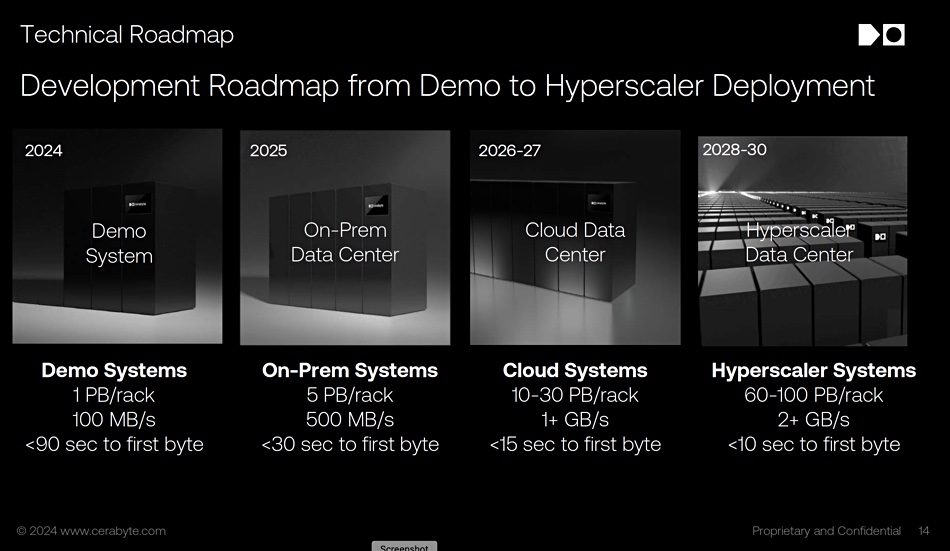Cerabyte requires venture capital funding, partnership with a tape library system vendor, or joint development with a large-scale user to bring its glass archival storage system to market.
The company is developing technology in which a femtosecond laser punches nanoscale holes in a ceramic layer to indicate a binary number which can be read by a scanning microscope. The data is organized into QR-code squares with 2 million bits written in one laser pulse and 1 GB of data on each surface of the glass. The ceramic-coated glass slab is held inside an LTO tape-sized cartridge holding around ten slabs and stored in a robotic library system. These write-once-read-many platters can hold data for a thousand years or more, with no need for periodic refreshes. A prototype system has been built using readily available technology components and the next step is getting a commercial product funded and built.

CEO Christian Pflaum told an IT Press Tour audience in Palo Alto about the component ecosystem and Cerabyte’s scaling plans. He has set up Cerabyte Inc. in the US, run by director Steffen Hellmold, to help with commercialization. Hellmold said: “It was previously thought only DNA storage could develop to store exabytes per rack. But Cerabyte can scale there as well.” And its tech is more practical and closer to productization.
Blocks and Files discussed three productization routes with Cerabyte: VC funding to pay for product manufacturing and go-to-market business arrangements, partnering with an existing tape library systems vendor, or, as Pflaum and Hellmold suggested, partnering with an end user.
Such an exabyte-scale user would be facing the prospect of ongoing expensse due to tape’s need for periodic content refreshes (resilvering). Tape libraries also occupy appreciably more floorspace than a Cerabyte system for a given amount of data.
A large archive customer could make significant savings in the running costs of an archive by selecting Cerabyte technology instead of tape. Cerabyte could be productized in around a year, whereas DNA storage is years away from commercialization.

Pflaum and Hellmold said Microsoft’s Project Silica, which stores data as nanoscale voxels in a silica glass slab, is much more complex than Cerabyte’s technology, requiring higher precision instruments. Cerabyte considers that its technology represents the nearest and most practical improvement on tape archiving – which is far from ideal for exabyte-level archives.
As for disk drive archives, they are impractical as the disk drives would need replacing every five years, according to Pflaum. They would last longer if spin-down archiving is used, but Cerabyte would have a significant edge on density and hence datacenter floorspace needs.

Hellmold said large scientific research institutions like CERN could be prospects for joint development with Cerabyte, and government institutions a second possibility. They could help fund productization then receive a cut of ongoing sales.
Pflaum said the initial response from component and other potential partners had been positive. This could presage ceramic-coated glass archiving becoming a reality.








